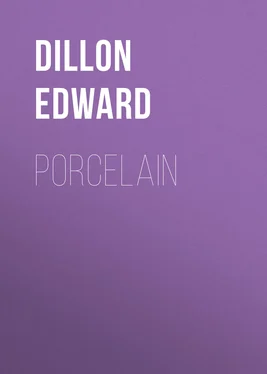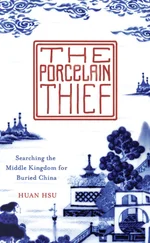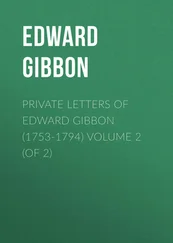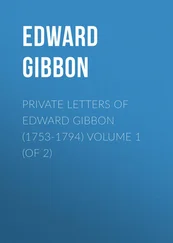Edward Dillon - Porcelain
Здесь есть возможность читать онлайн «Edward Dillon - Porcelain» — ознакомительный отрывок электронной книги совершенно бесплатно, а после прочтения отрывка купить полную версию. В некоторых случаях можно слушать аудио, скачать через торрент в формате fb2 и присутствует краткое содержание. Жанр: foreign_prose, foreign_antique, на английском языке. Описание произведения, (предисловие) а так же отзывы посетителей доступны на портале библиотеки ЛибКат.
- Название:Porcelain
- Автор:
- Жанр:
- Год:неизвестен
- ISBN:нет данных
- Рейтинг книги:4 / 5. Голосов: 1
-
Избранное:Добавить в избранное
- Отзывы:
-
Ваша оценка:
- 80
- 1
- 2
- 3
- 4
- 5
Porcelain: краткое содержание, описание и аннотация
Предлагаем к чтению аннотацию, описание, краткое содержание или предисловие (зависит от того, что написал сам автор книги «Porcelain»). Если вы не нашли необходимую информацию о книге — напишите в комментариях, мы постараемся отыскать её.
Porcelain — читать онлайн ознакомительный отрывок
Ниже представлен текст книги, разбитый по страницам. Система сохранения места последней прочитанной страницы, позволяет с удобством читать онлайн бесплатно книгу «Porcelain», без необходимости каждый раз заново искать на чём Вы остановились. Поставьте закладку, и сможете в любой момент перейти на страницу, на которой закончили чтение.
Интервал:
Закладка:
Casting.—There is yet another process which is largely resorted to in European works, but which appears to be unknown to the Chinese. It depends upon the rapidity with which dry plaster of Paris will absorb the water from a slip of creamy consistency, without allowing any of the solid particles to pass along with the water absorbed. The slip-mixture is poured into the plaster mould, which at once absorbs the water, leaving a uniform deposit upon the surface of the mould. After pouring or otherwise drawing off the water, a second and thicker slip may be added so as to form a second layer. The paste of the porcelain so prepared is likely to be of a lighter and more porous consistency than when made by throwing or pressing. This process was used in the eighteenth century at Derby, and doubtless elsewhere, and it was preferred to moulding for making statuettes. Some account of it is given by Haslem, a good practical authority, in his Old Derby China . For small objects, ‘casting’ has long been employed in France, and more lately Ebelmen and Regnault have so improved the process, that vessels of all shapes and dimensions are made by it. This has been rendered possible by the introduction of compressed air into the interior of the vessel, by which means the paste is kept in position until it is sufficiently dry to support itself. A still better way of doing this is to exhaust the air on the outside , by placing the mould in an air-pump; the upper part can then be left open, and the whole operation is under the eye of the workman. M. Vogt ( La Porcelaine , pp. 157 seq. ) laments that in France the increased use of these mechanical processes had so reduced the demand for skilful potters, that the race is nearly extinct.
Firing and Furnaces.—So far in our treatment of the operations involved in the manufacture of porcelain, the same general description has been applicable, with trifling exceptions, to the processes in use both in Europe and in the far East, and to soft as well as to hard paste. But now that we have to describe the firing of the ware, a division into three classes is necessary:—
1st. The Chinese system. This is the simplest plan. The glaze is applied at once to the air-dried ware, which is then subjected to but one firing—that of the ‘ grand feu .’
2nd. The French system for hard paste. The unglazed vessel is exposed to a heat varying from dull to full red, generally in the dome over the main body of the furnace. It is then glazed, and again fired to the full point required by the paste. This is essentially a French process, and the preliminary fire is known as the feu dégourdi .
3rd. The English system used for bone pastes. In this case it is the first firing that is the most severe. The ‘biscuit oven,’ therefore, in which this is effected, must not be confused with the feu dégourdi just mentioned. After dipping, the ware is heated again in the ‘glozing’ or glazing oven, but only to a temperature sufficient to melt the glaze.
In the case of ware decorated with enamel colours over the glaze, there will be required in all these cases one or more additional firings at comparatively low temperatures in the muffle-stove.
The furnaces, ovens, or kilns in which porcelain is fired are always of the reverberatory type; that is to say, the fuel is burned in a separate chamber or fireplace, and the products of combustion pass over or among the ware that is being fired. Such furnaces differ on the one hand from the arrangement in a blast furnace, or that often used in the burning of bricks, where the fuel is mixed with the material to be heated, and on the other hand from the muffle-stove, where the object exposed to the heat is protected from the direct flame by the box of fireclay or iron in which it is placed.
Kilns of many shapes and sizes have been used for firing porcelain, but they may most of them be included in one or the other of the following broad classes.
1st. The old bee-hive ovens of China, the use of which appears to have been abandoned in that country by the end of the seventeenth century. These ovens were generally small, in some cases only holding one vase. A row of them may be heated from one fireplace, and they are then built on a rising slope. This type has survived to the present day in Japan.
2nd. The oblong horizontal furnaces, often of considerable dimensions, used during the present dynasty in China. They resemble in section the ordinary type of reverberatory furnace found in metallurgical works. A very similar form was long employed at Meissen.
3rd. The large conical furnaces, now in general use in the porcelain factories of Europe. They may be heated by either direct or by reversed flame. 13 13 I think that this is a more practical division than the one made by M. Vogt and adopted by Dr. Bushell.
In China the fuel is generally pinewood, in billets of uniform size. In many European kilns wood is still used: birchwood, cut in lengths of fifteen to twenty inches, is the only fuel used at the present day at Sèvres. In England, however, the difficulties attendant on the use of coal appear to have been overcome.
The reader will find in the third volume of Brongniart’s great work ( Traité des Arts Céramiques , Paris, 1877) several plates giving plans and sections of all these types of furnaces. From a careful examination of these engravings more is to be learned than from any amount of verbal description. A thorough grasp of the process of firing is of the greatest assistance in understanding the problems and difficulties that arise in the manufacture of porcelain, and we shall have to return to the subject when we come to treat of the several wares.
Whatever differences there may be in the shape of the furnaces, when it comes to filling the interior with the ware to be baked, there is one precaution which has been adopted in nearly every country. 14 14 An important exception is to be noted in the case of the firing of large vases in China.
The ware must be protected from the direct heat of the flame by means of a case of fireclay in which it is placed. These are the seggars (French cassettes ; the process of filling and arranging them is called encastage ), to the preparation of which so important a department has to be set apart in all porcelain works, and whose manufacture adds so much to the working expenses.
The seggar proper is a cylindrical pan of fireclay, in shape and size like a hatbox. They are piled, in the furnace, one over the other, and these piles or ‘bungs’ are arranged in the furnace so as to allow a free circulation of the hot gases between them, but otherwise they are packed as closely together as possible. These seggars may be used several times over. When broken, the fragments are ground up and mixed with fresh fireclay or argile-plastique to form new cases—without this addition the clay would be too plastic or ‘fat’ for the purpose. The greatest precautions are taken in the packing of the seggars in the furnace. The giving way of one pile from any inaccuracy in the arrangement may destroy the contents of the whole oven. So again infinite care must be taken in the arrangement and support of the objects in each seggar. The bottom is covered with ground flint or other infusible material, and the vessel is supported, when necessary, by various forms of struts, props, or crow-claws, which sometimes leave their mark on the base or side of the finished object. In spite of these precautions, a large quantity of defective pieces or ‘wasters’ are produced in all works, and these are usually cast aside. The finding of such fragments in after days is sometimes the only proof we have that porcelain or pottery has formerly been made at the spot. But the proof is final, for defective pieces and ‘crow-claws’ are not objects likely to have been imported from a distance. Again, the indelible marks left on the porcelain, either on the edge which rested directly on the seggar or at the points where the object was supported by the crow-claws, often give valuable hints as to the provenance of the piece in question. 15 15 A good instance of the first case is the finding of crow-claws in the rubbish-heaps of Fostât or Old Cairo. As to the method of support indicating the place of origin, see what is said below about the celadon ware of Siam.
In the case of valuable wares these rough edges and marks are removed as far as possible by grinding on a small wheel, and then polishing the surface with pumice or with putty.
Интервал:
Закладка:
Похожие книги на «Porcelain»
Представляем Вашему вниманию похожие книги на «Porcelain» списком для выбора. Мы отобрали схожую по названию и смыслу литературу в надежде предоставить читателям больше вариантов отыскать новые, интересные, ещё непрочитанные произведения.
Обсуждение, отзывы о книге «Porcelain» и просто собственные мнения читателей. Оставьте ваши комментарии, напишите, что Вы думаете о произведении, его смысле или главных героях. Укажите что конкретно понравилось, а что нет, и почему Вы так считаете.












